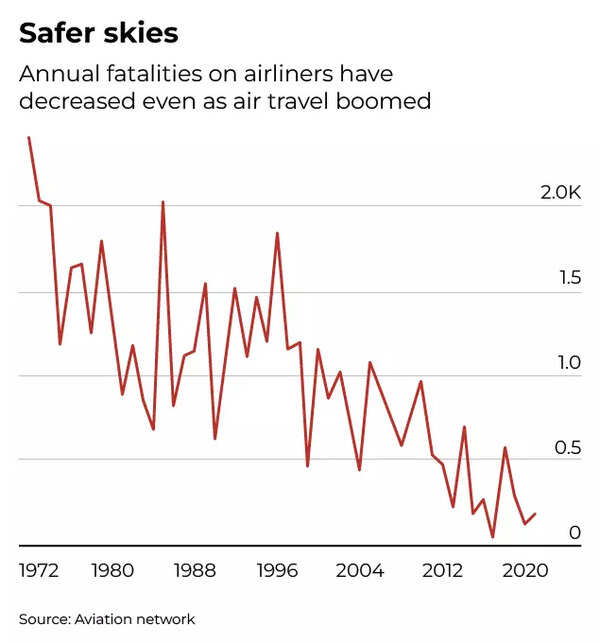More than 40 countries, including Germany, the United Kingdom and New Zealand, have asked the United Nations body that sets aviation standards to help make single-pilot flying a safe reality.
The European Union’s Aviation Safety Agency has also worked with aircraft manufacturers to determine how solo flights would work and prepare rules to oversee them. EASA said such services could start in 2027.
The plan doesn’t sit well with the pilots. It’s a tough sell, even for the passengers.
Tony Lucas, captain of the Airbus SE A330 for Qantas Airways Ltd. and president of the Australian & International Pilots Association, is concerned a lone pilot could be overwhelmed by an emergency before anyone else has time to get to the cockpit to help.
“The people who fly this route are not the people who fly jets every day,” Lucas said. “When things go wrong, they go wrong pretty fast.”
This is what happened aboard Air France Flight 447 bound for Paris from Rio de Janeiro on June 1, 2009. With the aircraft flying at 35,000 feet (10,670 meters) above the Atlantic Ocean and the captain resting in the cabin , the two co-pilots in the cockpit began getting erratic airspeed readings, possibly from frozen detector tubes on the outside of the aircraft.
When the captain arrived in the cockpit 90 seconds later, the aircraft was in an aerodynamic stall from which it never recovered. Less than three minutes later, she struck the water, killing all 228 on board.
Lucas, a control and training captain, is also concerned about lost opportunities to mentor junior pilots if the flight crew increasingly work alone.
Change may be coming soon
Planned changes bring many challenges. It’s not yet clear what would happen if a lone pilot collapsed or started flying erratically. Automation, technology and remote assistance from the ground should go some way to replacing the expertise, safety and immediacy of a second pilot.
Single pilot operations are “the unavoidable challenge,” said Chris Kempis @CathayPacific at the #IATASafetyConference,… https://t.co/BPAPWfmj7O
—IATA (@IATA) 1666856701000
Aviation has been moving towards this point for decades. In the 1950s, commercial aircraft cockpits were busier, typically with a captain, first officer or co-pilot, a flight engineer, a navigator, and a radio operator. Technological advances have gradually made the last three positions redundant.
“We are potentially removing the last bit of human redundancy from the cockpit,” EASA communications manager Janet Northcote wrote in an email.
A condition for single-pilot operations is that it be at least as safe as with two people at the controls, according to an EU request to the International Civil Aviation Organization, the United Nations body for aviation standards.
“Psychological barriers are probably more difficult than technological barriers,” Boeing Co. Southeast Asia president Alexander Feldman said during a Bloomberg corporate summit in Bangkok last week. “The technology is there for the individual pilots, it’s really about where the regulators and the general public feel comfortable.”

A first step would be to allow solo piloting when planes are cruising, typically a less busy time than takeoff and landing. This would allow the other pilot to rest in the cockpit, instead of remaining in the cockpit to help fly the plane.
By alternating breaks in this way, a crew of two could fly longer routes without the help — and expense — of an extra pilot.
Eventually, flying could be fully automated with minimal supervision from a pilot in the cockpit. The system could detect if the pilot for any reason has become incapacitated and then land the plane himself at a pre-selected airport, according to EASA. Such flights aren’t likely until after 2030, she said.
Need assessment
The value of having two pilots up front was famously confirmed on January 15, 2009, when a US Airways plane struck a flock of geese shortly after takeoff and lost power in both engines. The captain, Chesley Sullenberger, and first officer Jeffrey Skiles managed together to land the Airbus A320 on the Hudson River. Nobody died. The incident became known as the Miracle on the Hudson.
Nothing to date has proved safer than “a rested, qualified and well-trained second pilot physically present on the flight deck,” the International Federation of Airline Pilots’ Associations told ICAO in a document for its assembly on last month.
“Commercial airline passengers absolutely expect and deserve two pilots in the cockpit,” said Joe Leader, chief executive officer of Apex, a New York-based aviation association that focuses on passenger experiences.
The move to single-pilot operations could impact areas such as crew training and medical requirements, as well as mental health and job satisfaction, the UK’s Civil Aviation Authority said in an email. United.
The impact of flying alone, even for a while, requires a “detailed assessment,” said the authority, one of the regulators who contributed to the European document for the ICAO assembly.
The International Coordinating Council of Aerospace Industries Associations, which represents aircraft manufacturers worldwide, is urging ICAO to develop a timetable for manned flights during non-critical periods.
Airbus said in an email it was considering how its planes could be flown by smaller crews. For now, the aircraft maker is working with airlines and regulators to see if two pilots could safely replace three-person crews on long-haul flights.
Carriers are looking into single-pilot flights, including China Eastern Airlines Corp, which suffered a fatal crash in March. Last month a pilot at the Shanghai-based airline co-authored research that evaluated how takeoff and landing tasks could be automated or completed with the help of a ground station.
EASA said it is aware of the solo flying concerns and that addressing them is part of the process.
“These concepts will not be implemented until the aviation community is confident that operations will be at least as safe as they are today,” Northcote said.
